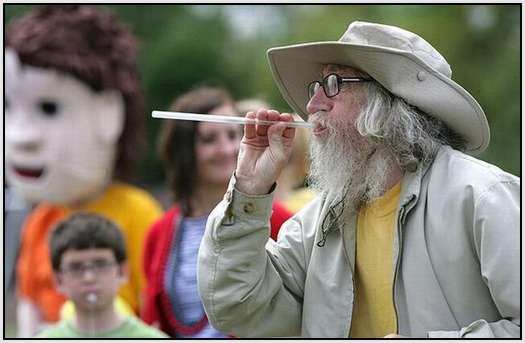
Today’s installment of “Ask Foghorn” isn’t intended so much for you, the readers of this site. Our readers (as the recent survey, which is still going on BTW, shows us) generally own firearms already, so we would assume that you’ve figured out the basics of how a gun works. No, today we provide you with something better. This post was intended to be a resource, something that you all can link to the next time someone asks you that fateful question. So, how exactly does a gun work?…
The basic concept behind how a gun works, ANY gun, is pretty simple. A projectile is placed in a tube or “barrel“, and then some force is applied to accelerate it out the other end. The projectile then flies through the air until it hits a target. Just like the spitball-blowing gentleman in the lead image demonstrates, this concept works very well in the small scale for things like tiny pieces of wet paper and even small darts in blowguns. But when the projectiles are larger and the targets further away, more force is required.
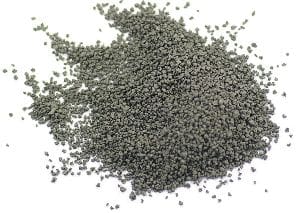
Luckily, a compound was discovered ages ago in China that would provide that force. Gunpowder is a granular substance that burns (not explodes) very quickly, creating a lot of expanding gases. These gases push the projectile out of the tube faster than any man can blow, even heavy projectiles made of lead. A mechanism was devised for making the best use of this substance, where it was inserted into a long metal tube and a projectile crammed in after it. The gunpowder was ignited using either a burning piece of rope or a spark, and then the projectile was expelled from the tube. This mechanism was called a “musket” and was used for centuries.
Muskets are known as “muzzle loaders” because that’s how you load them, from the front opening or “muzzle” of the gun. The musket is a long metal tube into which you pour some gunpowder and then shove a projectile. It’s simple and it works, but because the powder and projectile are loaded separately it takes a while to load and is sensitive to changes in the weather. Starting in the 1800’s a new way of loading a firearm was devised, one which used a self contained package that sped up the process of loading and firing the gun.
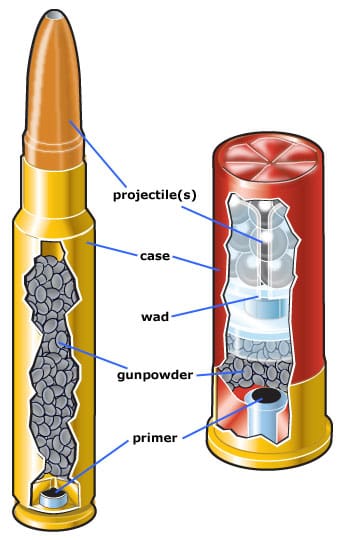 Modern firearms use a self contained “cartridge” that neatly packages the gunpowder, the projectile, and a mechanism to ignite that gunpowder all in one. Instead of the spark or flaming rope, all that modern firearms do to ignite the gunpowder is tap on the primer at the back of the cartridge. The primer then catches fire and ignites the rest of the powder. From there the concept of operations is the exact same as it’s always been: a projectile being forced out of a tube by expanding gasses. Guns that use this system are usually referred to simply as “modern firearms.“
Modern firearms use a self contained “cartridge” that neatly packages the gunpowder, the projectile, and a mechanism to ignite that gunpowder all in one. Instead of the spark or flaming rope, all that modern firearms do to ignite the gunpowder is tap on the primer at the back of the cartridge. The primer then catches fire and ignites the rest of the powder. From there the concept of operations is the exact same as it’s always been: a projectile being forced out of a tube by expanding gasses. Guns that use this system are usually referred to simply as “modern firearms.“
This video, a slow motion depiction of a pistol firing made by our own Daniel Zimmerman, shows exactly what I’ve been describing. The hammer (at the back, moving veeeeeeeery slowly) hits the primer, the primer detonates the powder (causing that large initial flash), and then the expanding gases force the bullet out of the barrel. You can even see the expanding gasses following the bullet out of the gun in a large black cloud. The flash you see from the muzzle is the remaining un-burnt gunpowder being ignited.
Once modern cartridge based ammunition became the norm in firearms design a plethora of different mechanisms were designed to make loading a firearm faster and more efficient. I just wanted to take a second and detail some of the more popular mechanisms for pistols and rifles (shotguns tend to follow rifles in their design and use many of the same mechanisms).
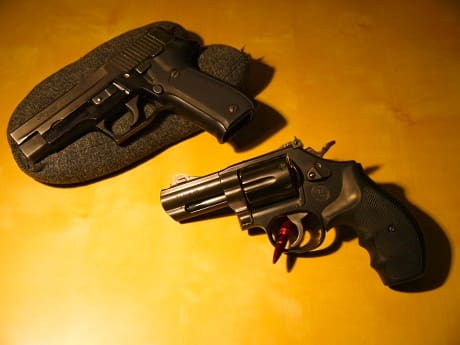
A pistol is a firearm that was designed to be compact in size and usually is not intended to be fired when braced against the shooter’s shoulder.
- Revolvers (bottom right of picture) are a type of pistol which use a rotating cylinder to hold the cartridges. When the hammer is pulled back the cylinder rotates, lining up a new and unfired cartridge with the barrel.
- Semi-Automatic pistols (top left) use the force of the expanding gases and moving projectile to automatically remove the spent case and load a new cartridge from a spring loaded magazine located in the handle. The slide (lighter colored part on the top) moves back and forth as the gun fires to eject and insert the cartridges.
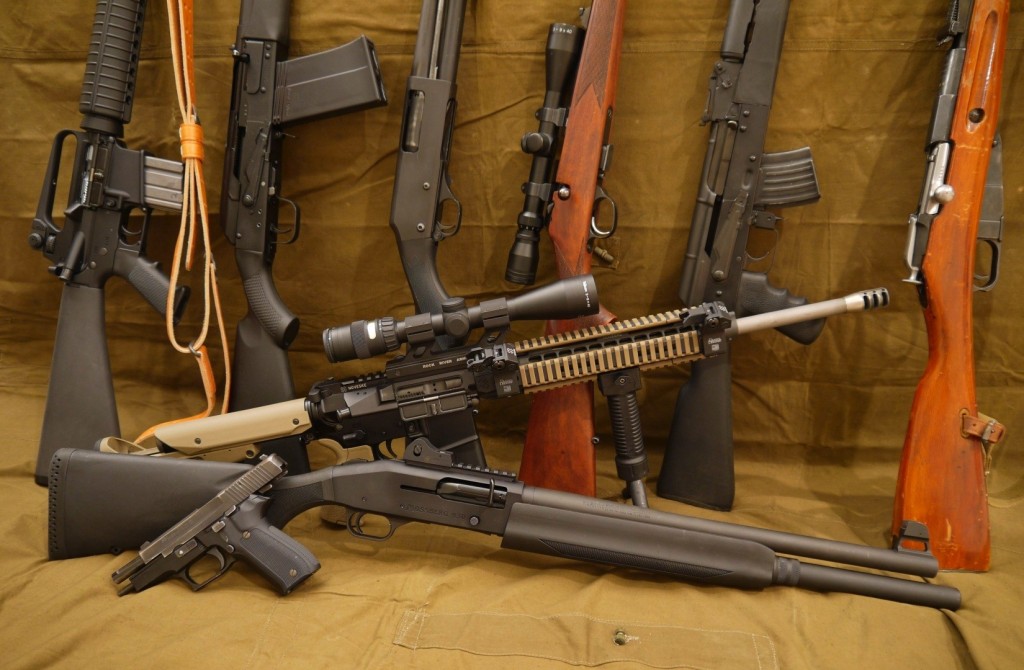 Rifles and Shotguns are designed to be fired while braced against the shooter’s shoulder and have a much longer barrel. Because of this longer barrel the firearm is much more accurate and fires at a much higher velocity.
Rifles and Shotguns are designed to be fired while braced against the shooter’s shoulder and have a much longer barrel. Because of this longer barrel the firearm is much more accurate and fires at a much higher velocity.
- Bolt Action Rifles (first and third from right along the back) as well as Pump Action guns (third from left along the back), like revolvers, require the shooter to perform an action in order to remove the spent case and insert a new cartridge into the gun.
- Semi-Automatic rifles (first, second, and fifth along the back, as well as both long guns on the bottom), like their pistol counterparts, use the force of the expanding gases and moving projectile to automatically remove the spent case and load a new cartridge from a magazine.
And that, in a nutshell, is how a firearm works.
TL;DR: Expanding gases produced from burning gunpowder force a projectile (bullet) through a metal tube (barrel), giving it enough momentum to hit a target.
If you have a topic you want to see covered in a future “Ask Foghorn” segment, email [email protected].

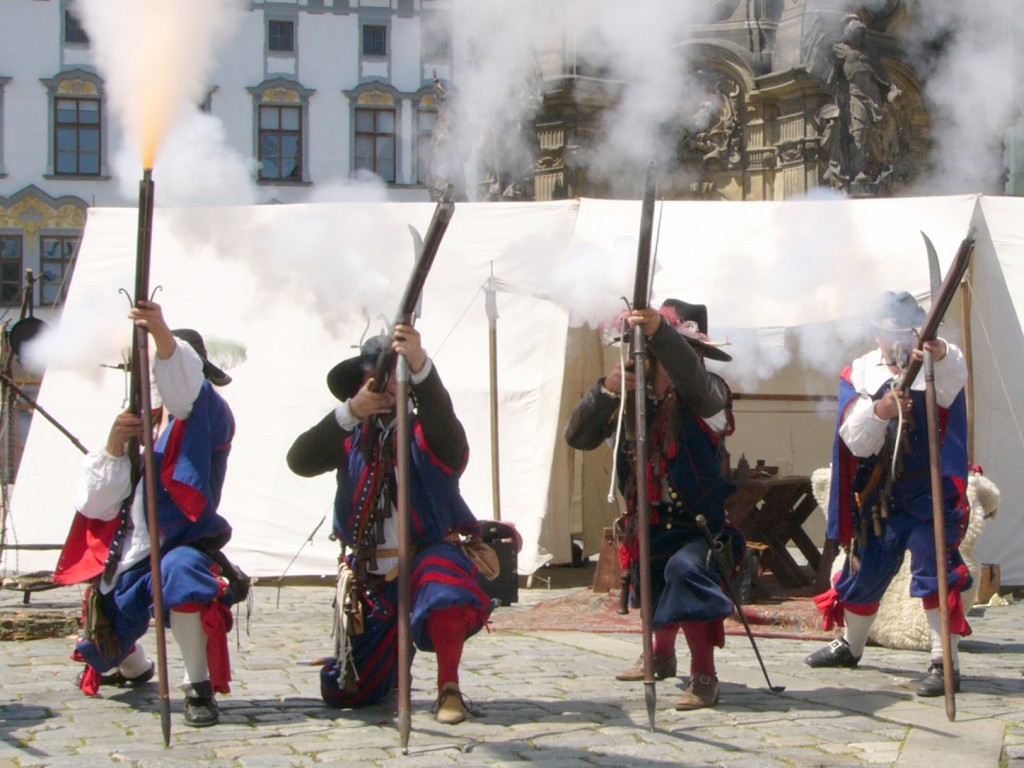

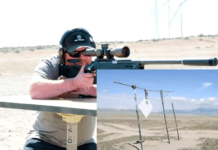

If you have the slo-mo you might as well do a demo of how the different types of semi-autos work.
+1
Thank you for this. Most of the success the gun-control lobby has comes from misleading and frightening people who don’t understand some very basic things about guns, mostly because they’ve just never been exposed to them.
Personally I don’t think this should be here as a post, you should permalink it as an article/resource.
Personally I don’t think this should be here as a post, you should permalink it as an article/resource.
+1 !
It possesses the soul of the shooter and turns him into an evil, bloodthirsty killer bent on a rampage ending with blood in the streets.
Duh.
And I thought only my ex was capable of that…
Lol!
So that’s how guns work. I was wondering.
A point of contention. Inside gun culture, a pistol is an autoloader. Outside gun culture, a pistol is a handgun. Specifically, a revolver is not always a pistol.
When I saw the preview photo of the mountain man with a straw, I wondered if it might be a publicity still from Season Three of Top Shot.
You had me worried for a second.
I thought it was the One Man Army Show from the Discovery Channel. Anybody watch that last night?
donut bob dude… YEAH!
Beg to differ. Indian IP of producing KNO3 was plagiarized by China. [The art of stealing is definitely Chinese invention!] Firecrackers likely Indian invention. Research on-going. Read the details here.
https://2ndlook.wordpress.com/2010/06/18/indian-gunpowder-the-force-behind-empires/
Thank you for this. Simplifying such a necessity in this world. I, as a woman, wish the men in my life would have raised me to know more about guns and how to handle them, however since they didn’t I am trying to educate myself to eliminate some of the intimidation I feel (but don’t want to) around guns. I want to eventually feel confident enough to conceal carry!!!! Thank you again !!
Comments are closed.